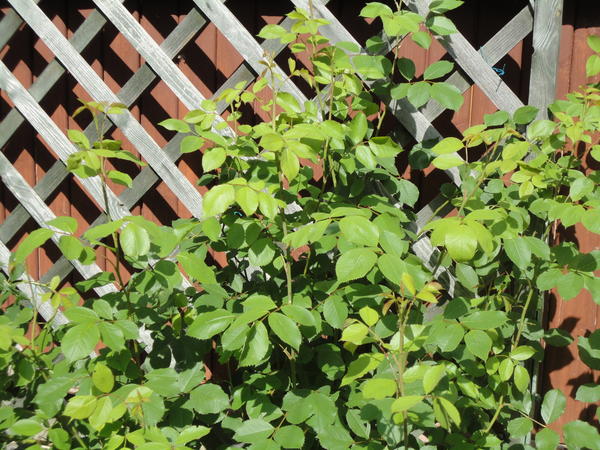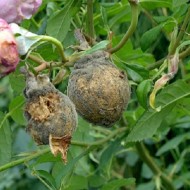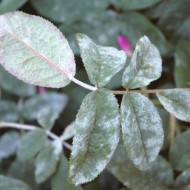How to properly care for the Topaz hybrid tea rose
Content
History and description of the Topaz rose
The Topaz rose was bred in 1867. Jean Baptiste André Guillot became the creator of the hybrid tea variety. It was he who bred many other hybrid varieties that have now flooded domestic gardens and summer cottages. However, Topaz, despite its rather venerable age, does not lose popularity and is considered a classic variety of roses.

The name of the Topaz flower is indeed associated with a gemstone. Moreover, the point here is not only in saturated color, but also in large sizes. In addition, the Topaz petals feel like velor, which gives the plant additional nobility and chic.
The tea rose topaz is called a hybrid for a reason, because it is very large by general standards. The flowering shrub reaches a height of 80-100 cm. The bush is characterized by thick, erect stems that do not bend even under the influence of strong winds. The stems have characteristic thorns, the leaves are large and glossy.
The flowers have a goblet shape: they are slightly elongated upward and consist of about 40 petals. The flowers reach a height of 13 cm, and in diameter - 12 cm, which determines the popularity of this variety. As a rule, 3 double buds are formed on each peduncle. The color of the flowers is unusual and very bright: pink with a slight shade of lilac. Flowers stay on the bush for a very long time. Even after cutting, they can stand in the vase for about two weeks.
The flowering period of the rose falls in late May - early June. A characteristic feature of the variety is abundant and prolonged flowering: the rose is strewn with buds until the onset of frost almost continuously. From the description of the culture, one can conclude about its frost resistance. Indeed, the plant can withstand temperatures as low as -23 ° C without any problems.

Advantages and disadvantages of the variety
- high indicators of decorativeness;
- pleasant aroma and large flowers;
- frost resistance and immunity to many fungal diseases;
- long and almost continuous flowering period;
- high rates of transportability - flowers retain their presentation even after a long transportation;
- unpretentious care;
- versatility in landscape design.
- intolerance to prolonged rainfall - as a result of frequent and prolonged downpours, rosebuds weaken and die.
Rules for growing a hybrid tea rose
To create all the conditions for a rose for rapid growth and development, it is important to know certain rules of agricultural technology.
Planting tips
The best time to plant this hybrid rose variety is May. At this time, the ground is already warm enough, which means that the plant will quickly take root.It is recommended to plant a crop in sunny places, reliably protected from through winds.
As for the preferences of the rose in terms of soil composition, the plant grows better on slightly acidic or neutral soil. In the absence of soil with the required acidity index, you should not be upset. The pH level can be adjusted with ash, chalk, fertilizers that contain potassium.
It is necessary to purchase planting material from trusted suppliers, otherwise the seedlings may be of poor quality. The main preparatory procedures are to soak the seedlings in ordinary water with the addition of a growth stimulant. 5-6 hours will be quite enough for the planting material to be ready for planting in open ground.
Video "Planting a hybrid tea rose in early spring"
In this video, experts tell you how to plant a rose bush sapling in early spring.
Watering, feeding and soil care
Watering young shrubs is recommended every three days. One bush requires about 4 liters of water. In the case of adult shrubs, watering should be reduced to once a week. In this case, the amount of water, on the contrary, increases to 10 liters. If the air temperature is above +25 ° C, watering must be supplemented with abundant spraying.
A young plant requires one feeding, which is carried out before the onset of winter. To do this, dilute a tablespoon of sulfate in 8 liters of water.
More mature shrubs are fed twice a year: in the fall before wintering and in the spring. In the spring, mineral compounds and organic fertilizing are introduced into the soil. It is important not to overdo it with fertilizers - after each feeding, you need to wait at least 10 days for the plant to absorb the nutrients.
Regular weeding is an important soil maintenance routine. If this is not done, the shrubs simply will not have enough nutrients, because they will literally be taken away by weeds. Weekly weeding is quite enough so that the plant does not experience a shortage of water and nutrients.
Trimming and shaping
Pruning plays an important role in stimulating flowering. Removing dead buds weekly allows you to enjoy the fragrant bloom almost continuously. In addition to stimulating pruning, sanitary pruning is carried out in the spring and autumn. In its course, all damaged and dry branches are removed. Also, the shrub is cut in order to give it the desired shape. In this matter, it is important to adhere to a single pruning direction, since only in this case a beautiful bush shape will turn out.

Preparing for winter
Rose Topaz is a fairly frost-resistant plant, therefore it does not require careful shelter for the winter. However, additional insulation should still be available. With the onset of cold weather, it is necessary to tie the bush so that the branches do not break under the weight of the snow. Then it needs to be covered with spruce branches or peat.
Diseases and pests
The most common diseases of the rose are powdery mildew, many types of spotting, gray rot. Pests are also dangerous: caterpillars, spider mites and green aphids. Insecticidal preparations are considered the most effective methods of preventing pest infestation.
- Gray rot
- Powdery mildew
- Black spot
What to do if it does not bloom
Often, the gardener is faced with a problem when a completely healthy rose bush simply does not bloom. Here are the main reasons:
- The age of the bush. Bushes that are too young often do not bloom. This is quite normal, you just need to wait for the plant to mature.
- Landing site. The lack of flowering may be due to a poor planting site. Perhaps the plant simply does not have enough sunlight.
- Pruning.Pruning too much can be not only ineffective in stimulating flowering, but also detrimental.
- Improper care. Deficiency of useful microelements, lack or excess of moisture - all this directly affects flowering.
- Diseases. If a plant is affected by some kind of disease, then all its strength is spent on maintaining life, and not on budding.

Use of the Topaz variety in landscape design
Rose Topaz looks great in both single and group plantings. The hybrid tea culture forms the best combinations with lavender, juniper, lilac, sea buckthorn. Due to the unpretentiousness and high indicators of decorativeness of the shrub, a huge variety of options for decorating his garden opens up before the gardener.
Reviews of the Topaz rose
The quality of the Topaz hybrid variety is confirmed by numerous reviews.
“I have loved Rose Topaz for many years. There are no problems with her, except that she does not tolerate long rains. The rest is quite unpretentious culture. "
“I love roses, I grow a variety of varieties in my summer cottage. But I can say with confidence that Topaz is my favorite variety. I have never met such a beautiful and fragrant plant! "
Probably, positive feedback about the hybrid variety is a good reason to plant it on your site.



